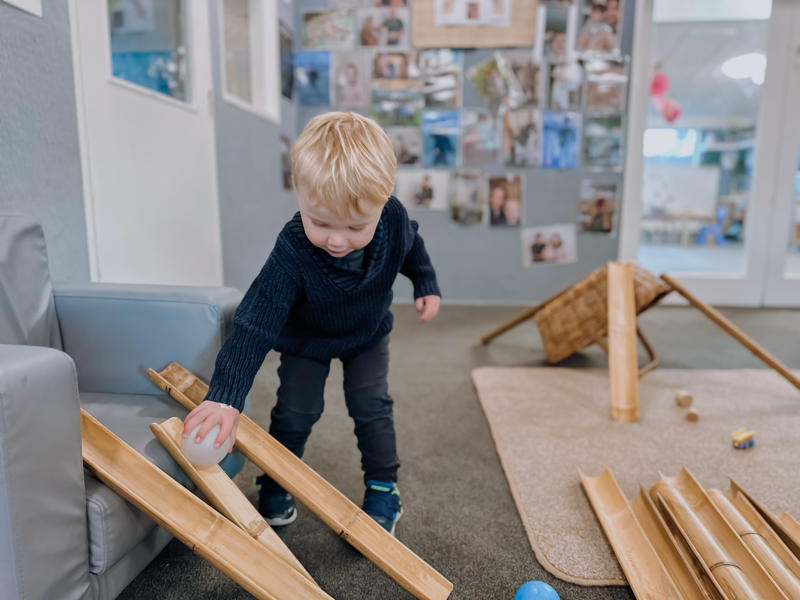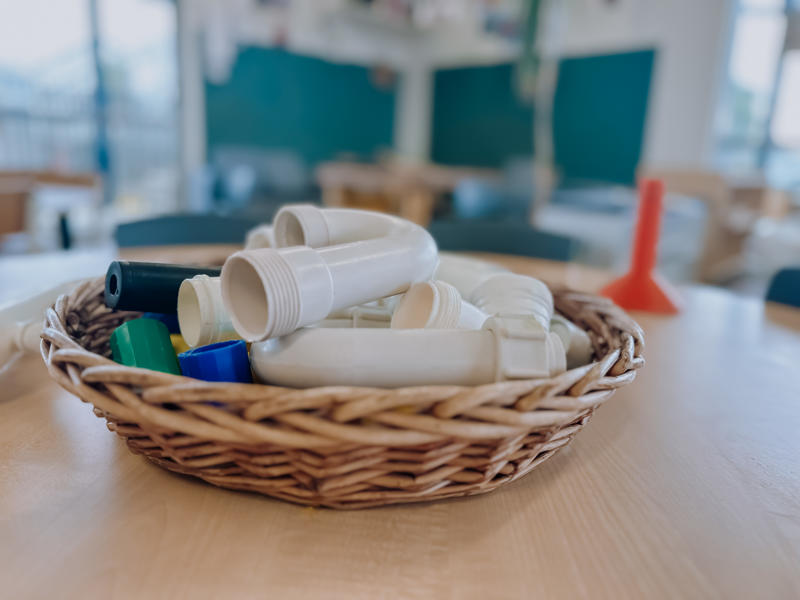Articles
Loose Part Play
You may have heard the term loose parts (or open ended resources) used within your child’s Early Learning Centre but what exactly is it and how are they beneficial in your child’s learning journey?
The theory of loose parts was first introduced in 1971 with the basic definition being that they are “ordinary, everyday, open-ended materials that can be manipulated and used in various ways, moved, carried, shared, combined and taken apart in various configurations and designs, There are no specific directions accompanying the materials and many various outcomes are possible from their use” (Education Hub, 2020).
The best thing about loose part play is that it can be done for free or for very minimal cost with objects found in nature such as shells, pebbles, wooden rounds and pinecones as well as items found around home such as cardboard boxes, yoghurt pottles, corks, milk bottle lids, wood offcuts, material and wool as well as many other non-prescriptive objects.


Some of the learning benefits of loose parts include:
- Imagination and creativity
Loose parts help bring children’s imaginations to life! Because they are not prescriptive in nature, they don’t tell children how they should play with them- their imaginations are then given free reign to set the scene!
Imagination involves thinking up a mental picture of what something could be without the use of the five senses and creativity is all about bringing those ideas to life, loose parts provide the perfect opportunity for that!
For example if a child uses their imagination to conjure up a make believe cafe then loose parts can be used as food items, to help reate the physical ‘cafe’ - think cardboard boxes, blocks ect.
A great example of the beauty of loose parts is the picture below- a plastic cookie will always be a plastic cookie but a wooden slice can be whatever the child can imagine! - Problem Solving Skills
As children explore and play with loose parts they are often engaging in thought processes that include a lot of trial and error. Children are able to test out ideas and theories and manipulate the objects to achieve their desired outcome. - Social and Emotional Development
When playing with loose parts with peers, children are often communicating their ideas together which involves both the sharing of these ideas as well as the listening to others’.
If you ever observe children who are engaged with loose part play it can be fascinating to hear what they are talking about. If they are role playing the supermarket for example, they are applying the knowledge that they know about supermarkets into their play. When they are also playing with other children, the other children’s ideas also feed into this, offering new and different perspectives.
Loose part play is a rich learning experience for children and these are just some of the many amazing benefits of including them in your child’s play.
